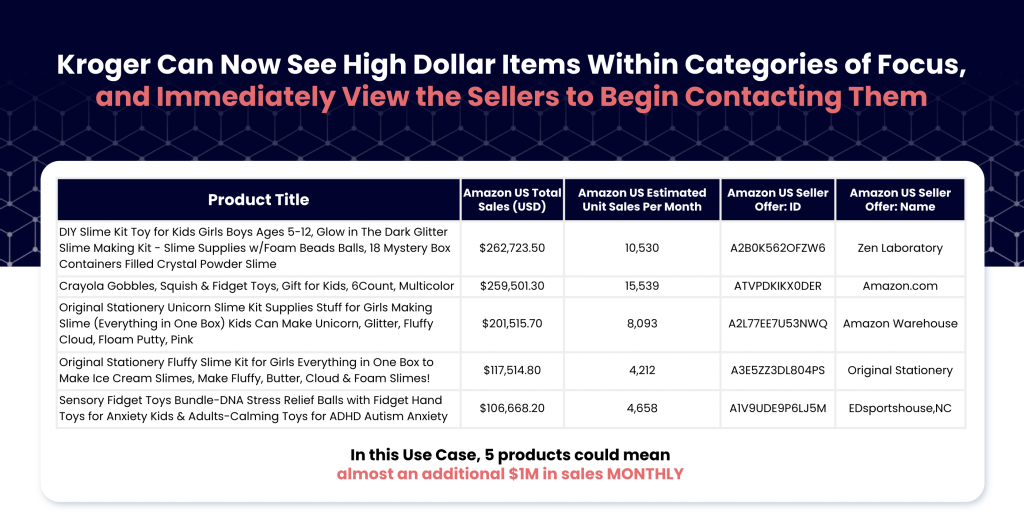eCommerce catalog management is one of the most important aspects of any digital marketplace. Without quality product catalog management, your customers will have a much harder time finding the products they’re looking for — and so will search engines.
You would hardly be alone in making eCommerce product catalog management mistakes that hurt your bottom line. In fact, it is estimated that of the 12 to 24 million eCommerce sites on the web, fewer than one million make over $1,000 per year.
By overcoming the following common online catalog management mistakes, you can help your marketplace stand out and start generating meaningful revenue.
11 Common eCommerce Product Catalog Mistakes to Avoid
- Confusing Navigation
If your online catalog makes it hard for site visitors to find what they’re looking for, it’s not doing its job. Too many menu navigation options can make your site harder to browse, and customers will be more likely to leave in frustration. Instead, use a concise navigation bar with fewer visuals. Making the top-level category collapsible will help keep navigation menus from looking cluttered once users go into secondary categories.
- Inaccurate Product Tagging
Product tagging has a direct impact on the discoverability of your products. Proper tagging ensures that what shows up in search results will match what the customer typed. On the other hand, inaccurate tagging can cause many catalogs to remain completely undiscovered. This often occurs when you rely on manual tagging for large catalog sizes. Automated tagging will eliminate such errors and simplify product catalog optimization.
- Delayed Product Onboarding
Just like manual tagging can make some products undiscoverable, manually digitizing and creating metadata for new products can result in a lengthy process to get a new catalog item to market. Once again, automated tagging provides a more flexible and agile process so that new items can be made available to customers in as little time as possible. The ability to be “first to market” with a popular new item can provide a major advantage over the competition.
- Inaccurate, Non-Persuasive Product Descriptions
The average eCommerce return rate is 20.8% — and quite often, inaccurate product descriptions are to blame. Compelling images and helpful, descriptive product descriptions make it easier for buyers to decide if an item is relevant and useful to them. This information should be accurate, though still persuasively written to get customers to buy. Quality information and pictures will boost sales and reduce returns.
- No Real-Time Market Visibility
Without real-time visibility into your own data — or the market as a whole — it can be difficult to manage inventory, forecast sales, or identify new items that should be added to your eCommerce catalog. Using product catalog API tools that gather real-time data from across the web will provide accurate insights that help you make smarter eCommerce catalog management decisions. Quality product performance data helps you allocate resources properly to keep operational costs down while also improving sales.
- Poor Inventory Tracking
Without automated tracking systems, it can become nearly impossible to accurately track eCommerce inventory across thousands of products. Without inventory alerts, it becomes all too easy for items to slip through the cracks. Inventory tracking and monitoring tools are crucial to prevent supply chain inefficiencies that could lead to shipping delays or popular items being out of stock for extended periods of time.
- Inadequate SEO
If your product listings aren’t optimized for SEO, they likely won’t appear in Google Search — which 49% of shoppers use to find new products. Relevant keywords must be used in title tags, meta descriptions, product descriptions, headers, and even the URL. Tags should be as specific as possible, highlighting the product brand and other differentiating features a consumer might type in for their search.
- Outdated Lists
A core aspect of product catalog management is ensuring that catalog lists are fully up to date at all times. Customers don’t want to add an item to their shopping cart, only to discover it is out of stock when they go to check out. Updated product lists help customers know if an item is in stock, coming soon, or on back order. Integrating with ERP software can enable automatic updates based on inventory levels to provide accurate information so that customers don’t experience any unpleasant surprises when trying to complete a purchase.
- Not Accounting For Channel Differences
As we’ve written previously, eCommerce sellers must account for differences between sales channels like Amazon, eBay, Instagram, and so on. Each channel displays product details differently — even something as simple as one channel using “M” and another using “medium” for clothing sizes can impact whether a listing is displayed properly. Tailoring lists for each sales channel you use will facilitate smoother product updates and better performance with potential customers.
- Irrelevant Product Recommendations
Amazon has made upselling and cross-selling of related products the norm for online shoppers. But if your marketplace recommends irrelevant products, you’ll have a hard time maximizing your sales potential. Upselling and cross-selling is most successful when recommendations are based on a user’s browsing history or what other customers have purchased along with an item. It can also be more effective when customers are only given a few options that are well-reviewed or top sellers.
- No Competitor Pricing Analysis
eCommerce prices are constantly changing. With so much competition, you must be fully aware of what others are charging for items that are similar (or the same) as what you sell through your marketplace. Gathering pricing data from across the web will help you set competitive prices that drive sales while still enabling you to turn a profit. This data could also be used to help you time sales and promotional events based on competitor activities.
Make Product Catalog Optimization a Priority
While these eCommerce catalog management mistakes can significantly hurt your marketplace, leaning into product catalog optimization can give you a major advantage over the competition.
Cluster’s Catalog Enhancement solution can help. With quality data, you can clean and enhance your canonical catalog, increasing revenue as you get the right listings in front of the right shoppers at the right time. With a wide host of solutions for eCommerce marketplaces, Cluster helps you shift your focus to winning the basket. Book a meeting today to learn how we can help improve your product catalog data.

























